From Clubwear to Costume, Meet the Collective Moving Berlin’s Fashion Agenda Forward
From Clubwear to Costume, Meet The Collective Moving Berlin’s Fashion Agenda Forward Gallery 1
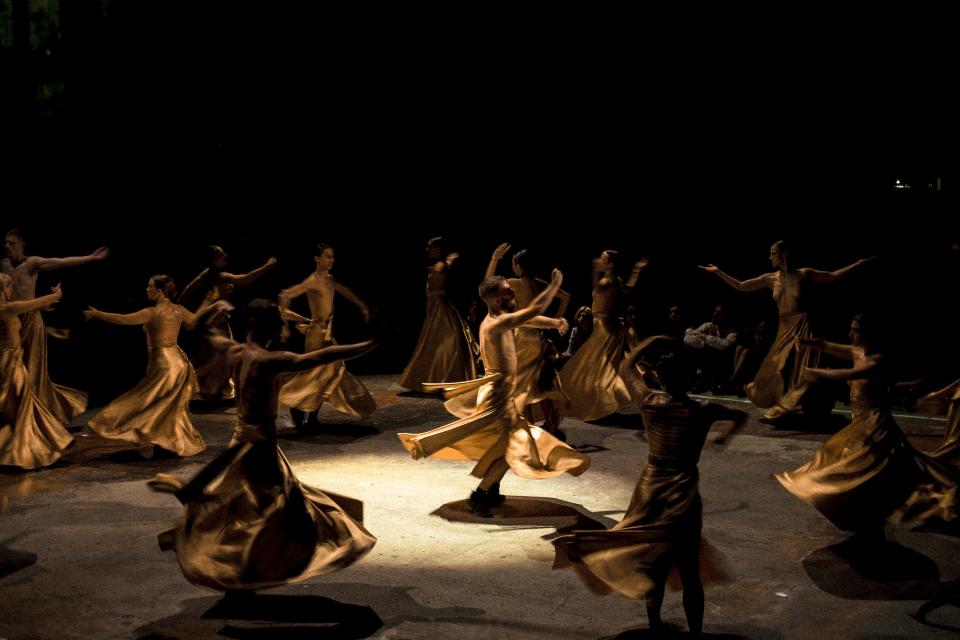


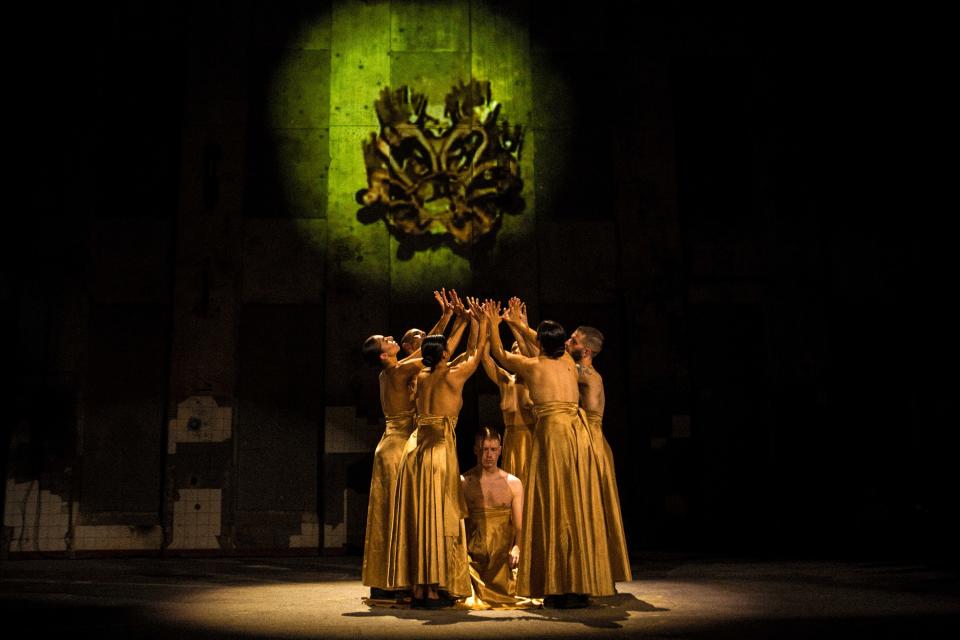
It’s a humid July evening in Berlin. Under the watchful Eye of Horus that looms above the central hall of super-club Berghain, a crowd of dancers sit in a concentric circle, moving their arms to the steady drone of Turkish singer Emre Demirtas’s wavering vocals. Their chests are laid bare and long, while golden skirts are tightly bound around their waists. Around them, audience members are crowded in hushed reverie. The air smells of burned sage and damp concrete.
This isn’t, despite first appearances, a scene from a post-apocalyptic horror film: instead the performance is a celebration, marking the fifth anniversary of cult Berlin label UY Studio. In lieu of a traditional catwalk presentation, the collective behind the brand decided to pay tribute to their home city’s techno heritage, hosting the showcase in Berlin’s most infamous nightlife spot. UY has always flirted with the fetish-gear aesthetic, but recently, the team behind the label has broadened their horizons further.
Six months ago, the collective caught the eye of American choreographer Richard Siegel, who has previously worked with left-of-center artists such as producer DJ Haram and bodywear designer Chromat on performances for his dance company Ballet of Difference. UY’s forthright ethos of genderless clothing intrigued Siegel, with his interest in countercultural dance dovetailing neatly with the brand’s own visual language. This led to a costume collaboration with the Staatsoper Unter den Linden and Berliner Staatsballett for the performance Oval, a contemporary ballet, where dancers clad in iridescent cutout bodysuits looked like they were dipped in cosmic dust, flitting across the stage beneath a ring of light.
It may be true that these Berlin opera houses and concert halls share the same tax status as Berghain, but, in terms of genuine collaboration and shared aesthetics, there has been little crossover. UY Studio, is one of the first fashion brands to successfully bridge these two worlds, is sui generis: a label as culturally fluid as it is gender fluid.
The brainchild of Idan Gilony and Fanny Lawaetz, who met at design school IED Barcelona, UY Studio began as a DIY clothing exchange between two friends who were aiming to break social constructs—and were also too broke to shop at retail prices. “Every shirt or dress I made for myself, I also made it with Fanny in mind. She would do the same with me,” says Idan, a native of Tel Aviv whose circuitous route to fashion came from evading the Israeli Army’s mandatory draft. Today sporting a shaved head, he sits poised in a tailored black collared shirt and thick silver hoop earrings.
After graduation, the two moved to Berlin in August 2013, a place where they felt their look would be better appreciated; or, as Idan puts it, “Less people would stare on the streets.” In the early days they shared a bedroom, sewing their first collections on the floor. With every €100 of customer profit, the pair would spend €50 on fabric, and the other €50 peacocking their latest looks at Berghain, business cards in hand.
“We were completely open to others, and others were open to us,” recalls Idan. UY’s prescient take on inclusivity fell in easy lockstep with the nightlife community—and it is this very community of weekend revelers that the collective has to thank for its success. Five years later, UY has grown beyond a private apartment atelier into a brick-and-mortar showroom on the tree-lined streets of the neighborhood Reuterkiez.
From Clubwear to Costume, Meet The Collective Moving Berlin’s Fashion Agenda Forward Gallery 2
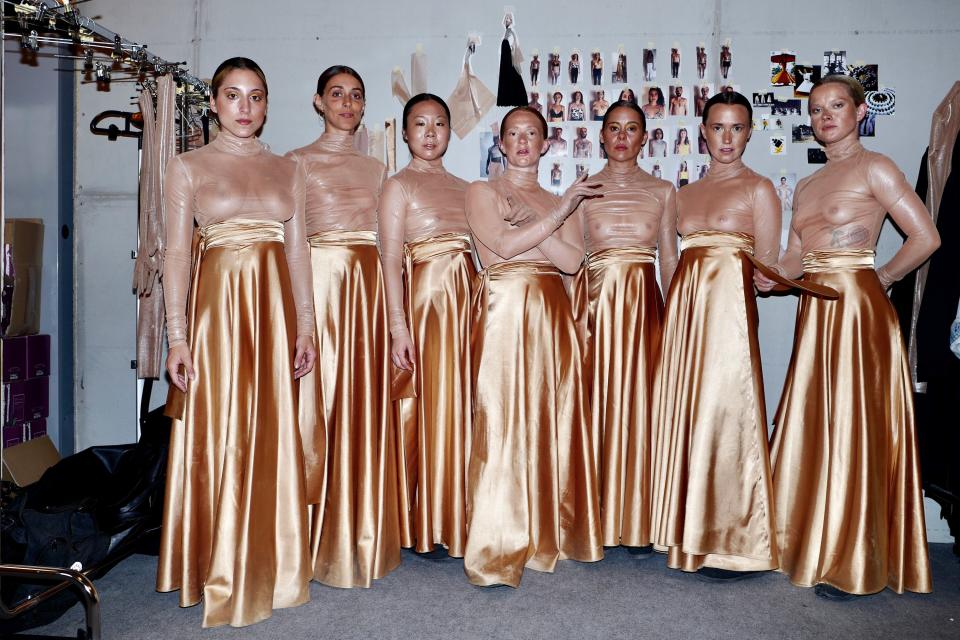
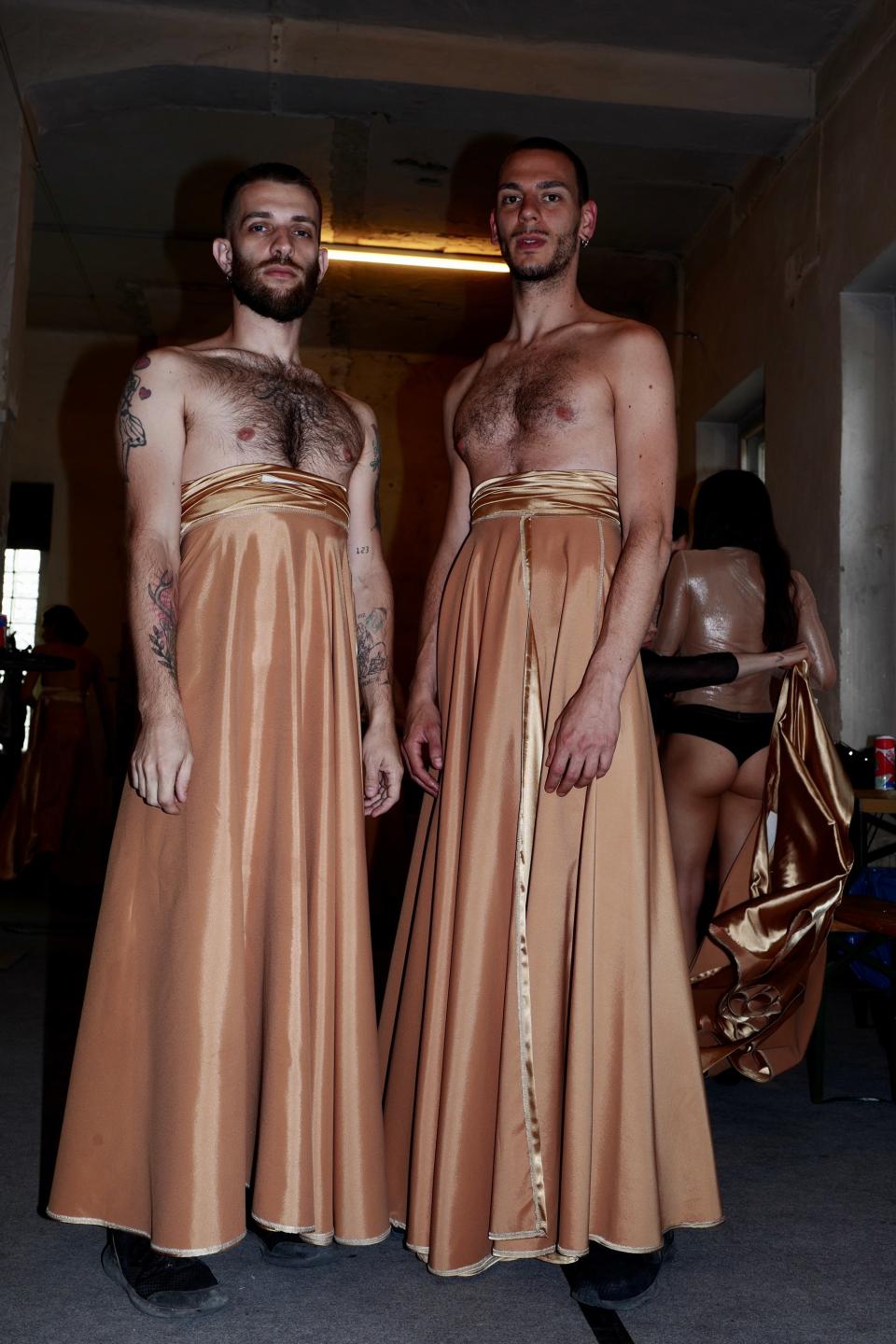
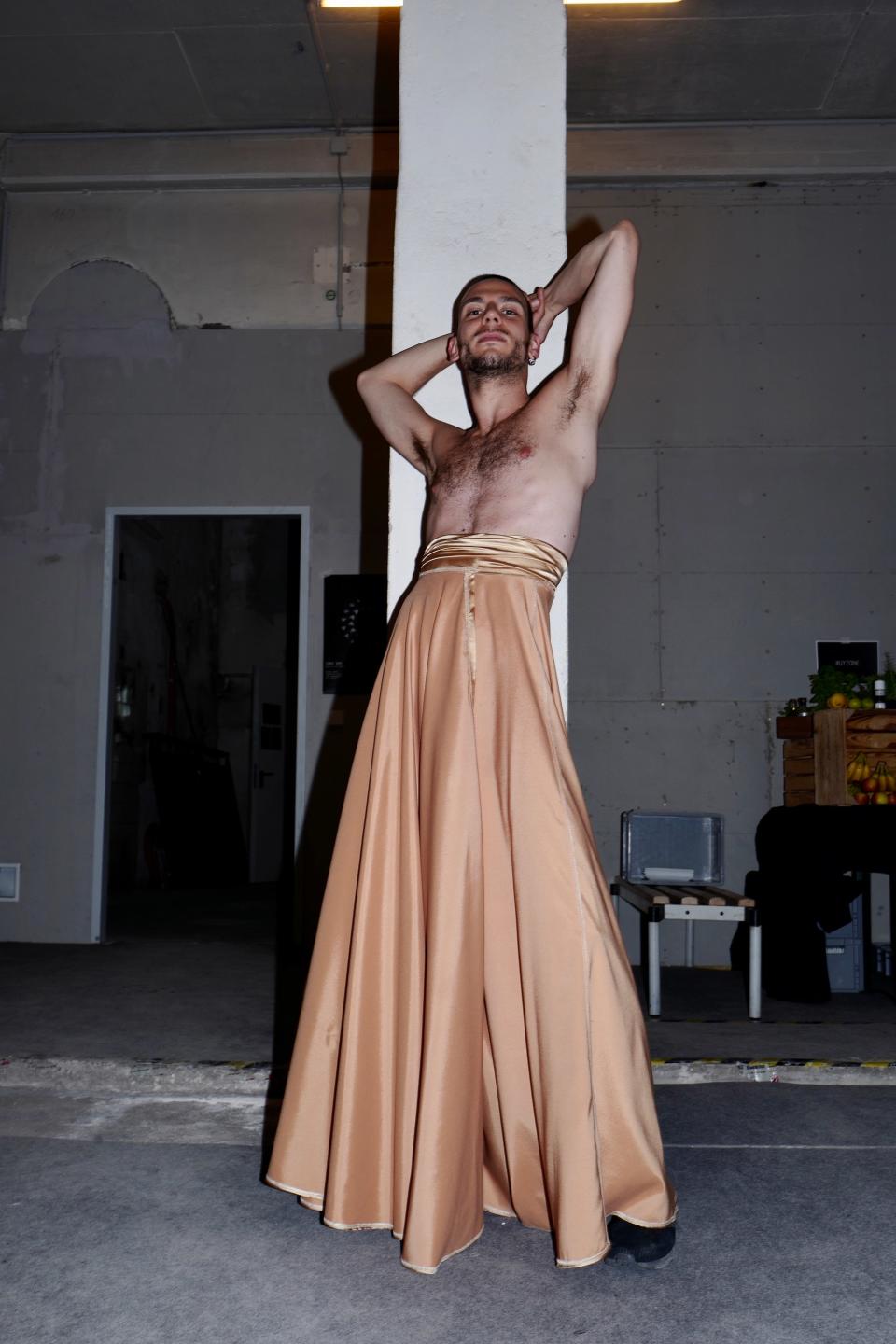
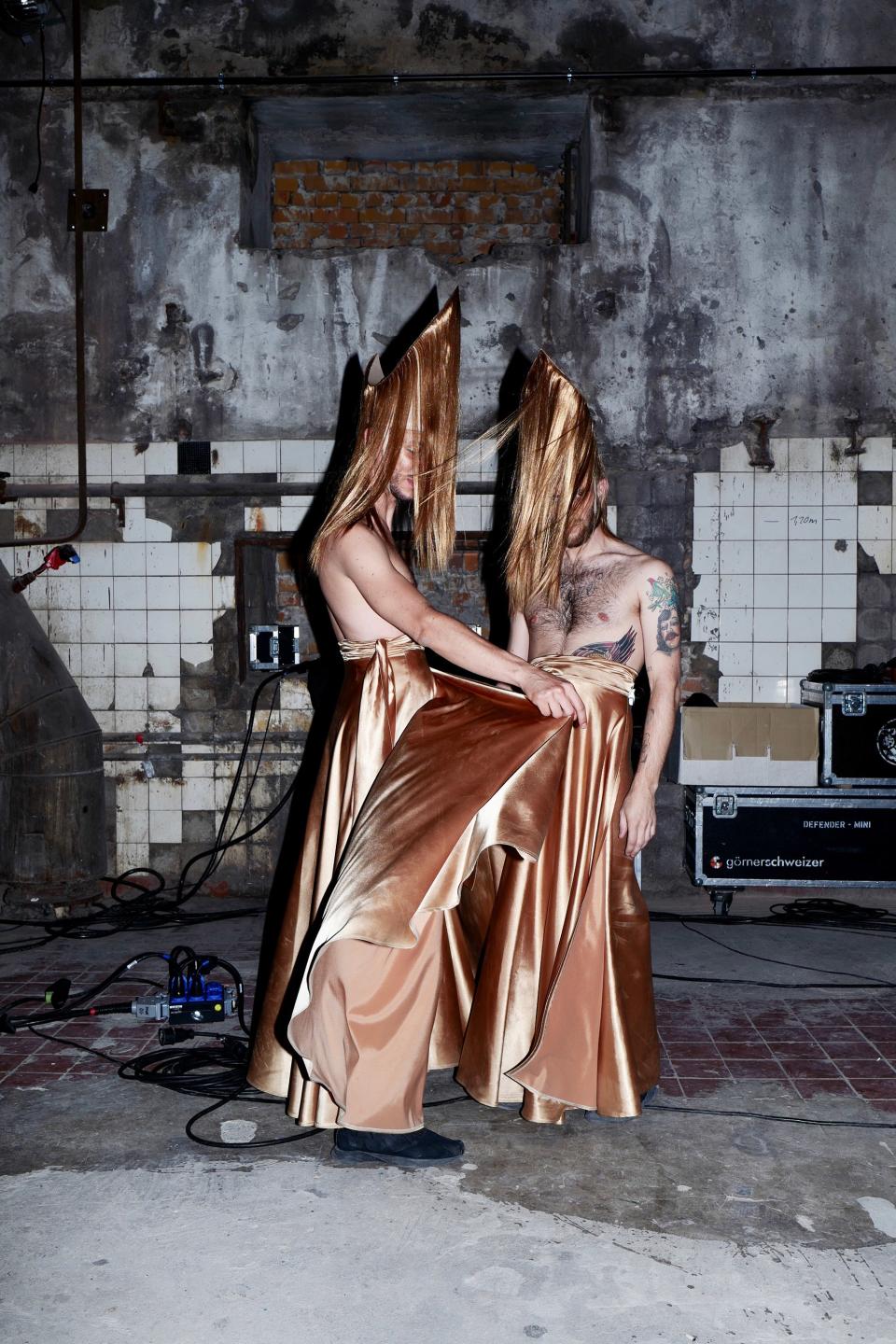

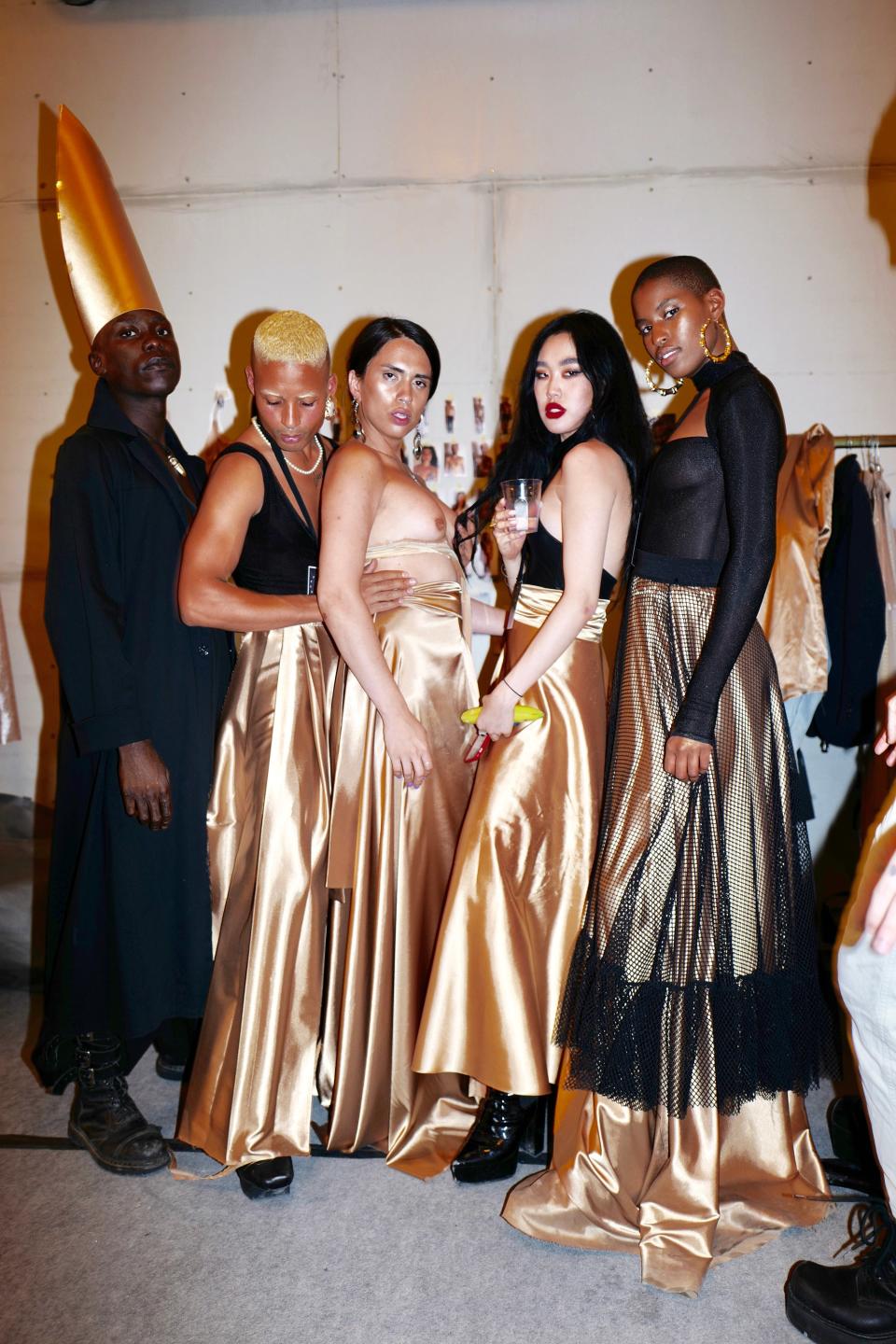
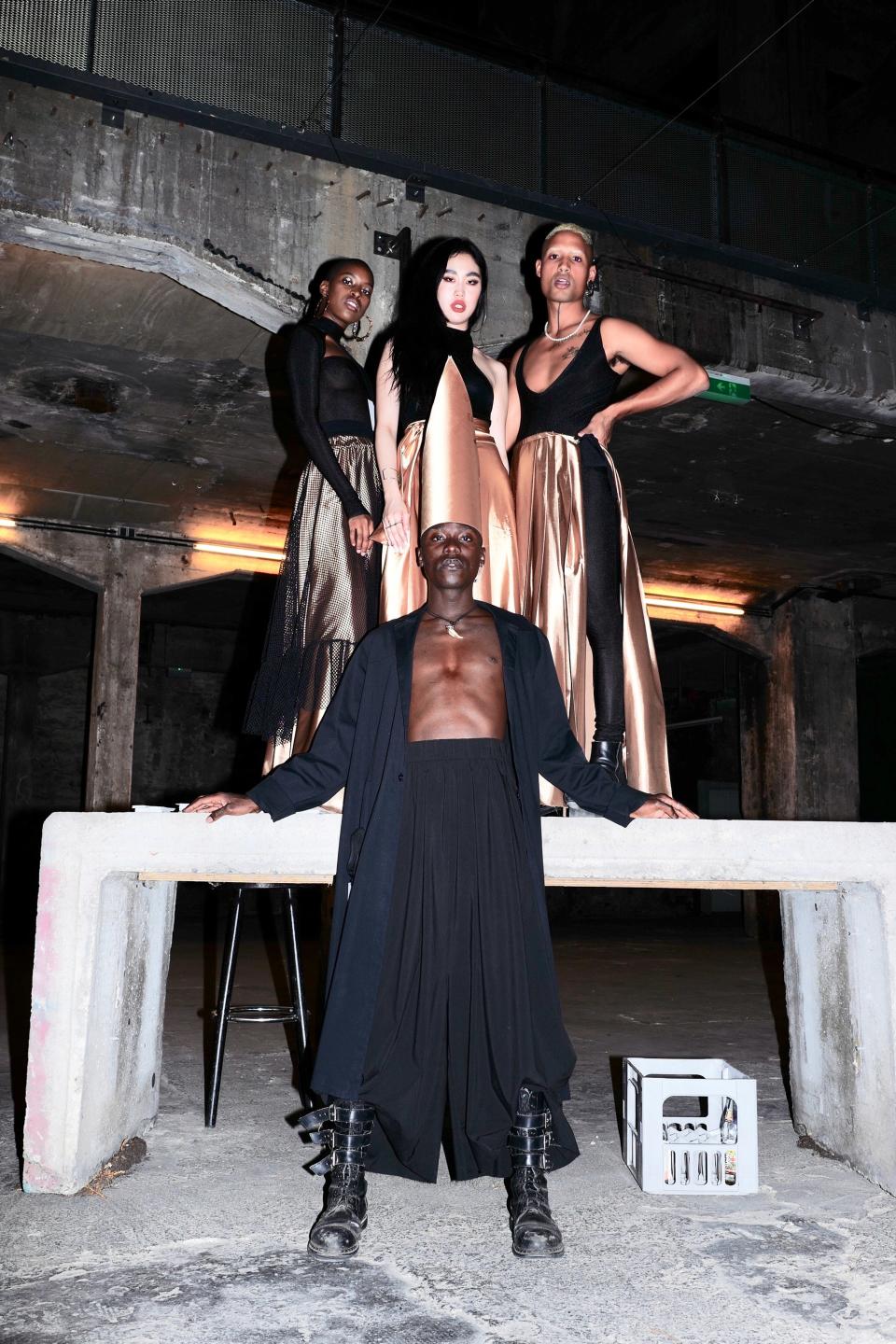
Across the years, the pair’s music tastes have also matured. “In the beginning we were locked onto techno,” Idan remembers. He continues in metaphor: “But after years of wearing denim, one day, you just don’t feel like it anymore. Maybe you go out and buy red leather instead.” Idan is referring to their protean interest in all genres, including tribal and classical music; today, he maintains: “Sound continues to be one of the biggest inspirations for us.”
Zone 005, in particular, exemplifies the label’s club kid core as much as it represents the duo moving towards new cultural frontiers. The show’s imposing industrial location and hypnotizing, stripped-down live score by Russian experimental electronic composer Dasha Rush was an intentional nod to UY’s techno roots. “The repetitive minimalism is meditative—it’s supposed to bring you closer to either somewhere else or inside of you,” says Rush. However, her addition of processed Indian tabla drums pushed UY into unfamiliar territory. Similarly, UY’s costume design, with nude mesh reminiscent of their work for the Staatballet, and the tightly coiled choreography by The Progressive Wave (Gal Naor and Matan Zamir), incorporating elements of the Japanese avant-garde dance butoh as well as Sufi whirling dervishes, moves the presentation firmly into the realm of interdisciplinary theatre.
Within the performance, there were no traces of the brand’s signature color, black. A row of dancers capped in swooping, conical headdresses, with faces obstructed by a mane of synthetic blonde hair, appeared half human, half beast. They charged towards the Russian soloist Valentin Tzin, who convulsed on the ground, trying to grab onto their floor-length skirts. The metallic paint that covered his body had begun bleeding into his sweat, like a golden figurine liquefying under molten-hot temperatures. Here, captured in full-bodied animation and dirtied by the venue’s detritus, the pieces spoke to Berlin’s creative lexicon as much as they maintained a quintessential UY essence: the clothing became more than a representation of the sole wearer, but also of the various scenes and subcultures they may be a part of.
Even as the label moves into new frontiers, they are keeping one foot firmly planted in the community that first supported them. Or, as Idan puts it: “We could never be here without the talented community we’re surrounded by.”
Originally Appeared on Vogue

